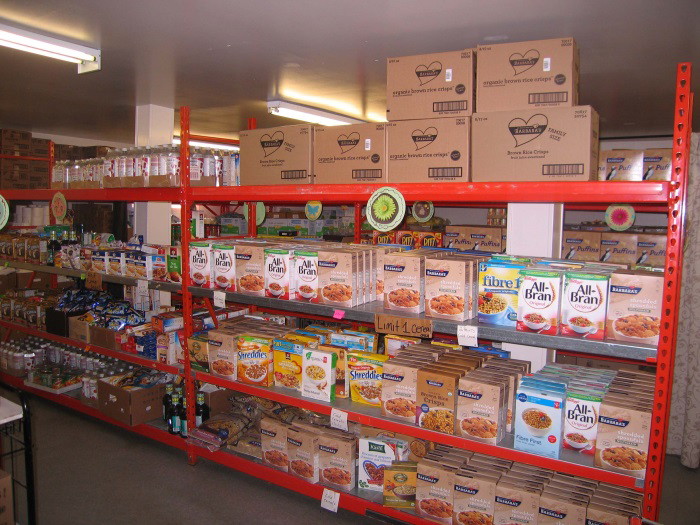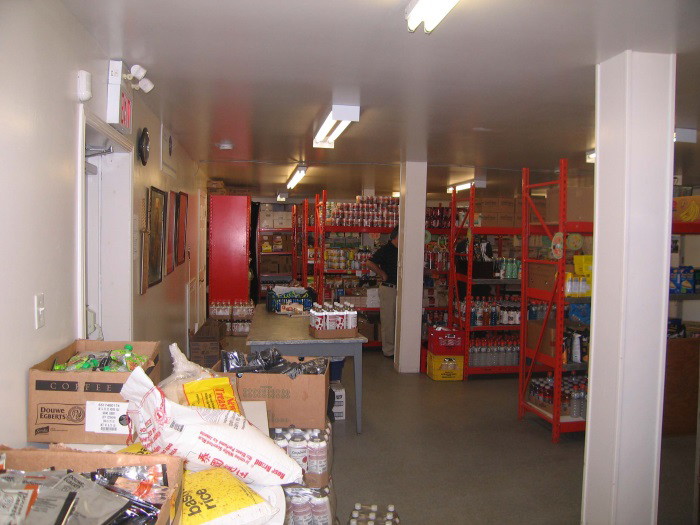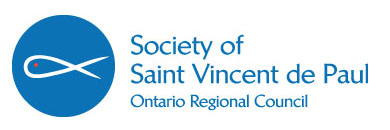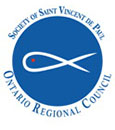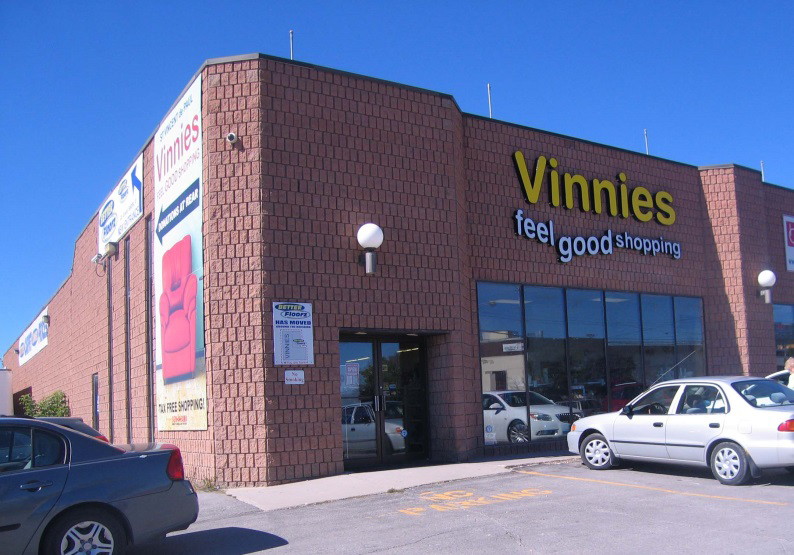
Vinnies Feel Good Shopping, store front
Every SSVP thrift store has been confronted with operating challenges at some point in their history. Most challenges are easy to remedy, while some present a greater degree of risk and effort to resolve. Peterborough was no exception. The thrift store struggled to cover operating expenses, resulting in several deficit loss years. The store facility had limitations in design and its location made it difficult to fulfill its mission. Add to this, the Peterborough Particular Council deemed that the food bank distribution system amongst the conferences was not efficient and often inequitable in their food distribution to those in need. Often families with the greatest need were given less food support because the sponsoring conference had fewer resources available and many people to serve, while financially strong conferences provided greater food benefits because they had few people to serve.
The Particular Council was faced with some difficult decisions; continue the status quo or address head on the challenge at stake...they chose the latter.
Basis facts about the City of Peterborough: Peterborough is 125 kilometers northeast of Toronto. The population of the City of Peterborough was 78,698, while the census metropolitan area (CMA) has a population of 118,975 as of the 2011 census. It presently ranks as the 33rd largest in Canada. Peterborough's nickname of "The Electric City" underscores the historical and present day importance of technology and manufacturing as an economic base of the city, which has operations from large multi-national companies such as Siemens, Rolls Royce, and General Electric, and more local technology businesses such as Fisher Gauge and Bryston. In recent years, many of these companies have dramatically downsized or left Peterborough, resulting in the city having the highest unemployment rate in Canada. Peterborough is also known as the gateway to the Kawarthas "cottage country", a large recreational region of the province.
The Challenge and Vision: Bob Hartlin, the previous Particular Council President, had a vision for the food bank and thrift store operations. This vision included creating a central food pantry system for all conferences to contribute and provide staff, plus relocate the thrift store operations to a better location and facility. His approach to the council was 'do it now or it will never happen'. This vision also recognized that any major change to their operation required a disciplined approach and the right people to carry out these changes.
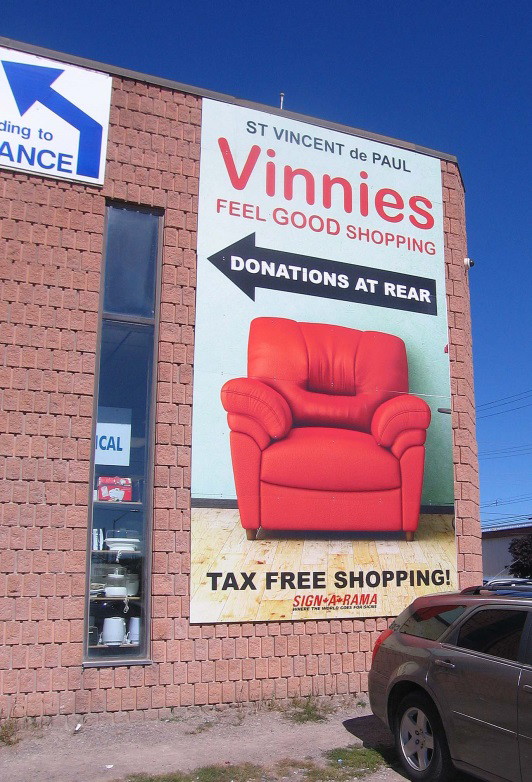
Clear signage to direct and encourage shoppers & donors
The first step was to establish a Planning Committee. The committee comprised of:
- A Finance person, a person who would provide complete and thorough financial transparency necessary to make important decisions.
- A Property Developer, a person who knew what was essential in assessing the necessary property requirements for the thrift store.
- A Personnel Recruiter, (i.e. Head Hunter). It was recognized that finding a suitable location alone was not sufficient to be successful. A strong Store Manager was necessary to execute and manage the changes. These skilled people were Paul Beamish, Steve Fulford and Julie Fulford.
- The current Store Committee, comprising of
- Sue Armitage, current President of Peterborough PC
- Fred O'Donnell
- Denis Orton
- Bob Hartlin
- Dorothy Dow
- Rosemary Herrington
- Frank Drumm
With the Planning Committee now in place, the next phases commenced.
The Finance people explored the merits of purchasing a new property. As part of this analysis, they reviewed the past five year's sales. They deemed that past sales did not support the purchase of a new property, so leasing a property was to be their focus.
The Developer, Steve Fulford, looked at numerous criteria: traffic flow, location to other retailers, pricing and property size. Several properties were identified. The building they chose was 8,000 sq/ft. compared to their old property of 5,000 sq/ft. The key to finalizing the acquisition of the property was their lease agreement. The term of the lease is 5/5/5, meaning three 5-year lease terms. However, in the 1st lease term, they negotiated a two year 'out clause'. This enabled the store the option to abandon the property if the relocation to the new store was not successful. The Peterborough Council still maintained the old store property which they owned and if necessary, they could move back to the original location.
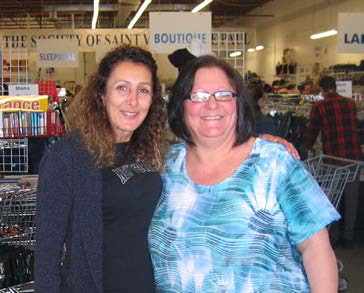
Sue Armitage, Peterborough PC President and Angela Oran, Store Manger
The Personnel Recruiter, Julie Fulford, commenced the process to find a Store Manager. The previous Store Manager passed away in 2010. Kathy Clarke stepped up to serve as interim Store Manager. An employment ad was placed on the Government of Canada HRSD website (
https://www.hrsdc.gc.ca/eng/home.shtml). This website expanded their employment search across Canada and was not restrictive to the Peterborough region. The search paid off. Angela Oran from Windsor responded bringing with her a successful thrift store management background from many years operating the Salvation Army Thrift Store in Windsor and a desire to relocate to the Peterborough region to be close to family. The initial interview was conducted by phone. A second interview was conducted in person. The Interview Committee was composed of the Developer, the Personnel Recruiter, the Past PC President and the current PC President. As part of the interview process, the Store Manager Responsibilities were presented. Angela was told that as part of her position as Store Manager she would be a 'partner' in the relocation decision making process as well as the establishment of the new store operation. This empowerment was a critical factor in solidifying Angela's decision to accept the position. Angela had a vision of what she wanted the store to look like. She had prior experience in opening several Salvation Army Thrift Stores, so that background was beneficial.
The Planning Committee presented their plan to the Particular Council. The presentation included the two initial visions, the relocation of the thrift store and the creation of a central food pantry utilizing the old thrift store location. Approval was obtained. This initial phase took one year to complete.
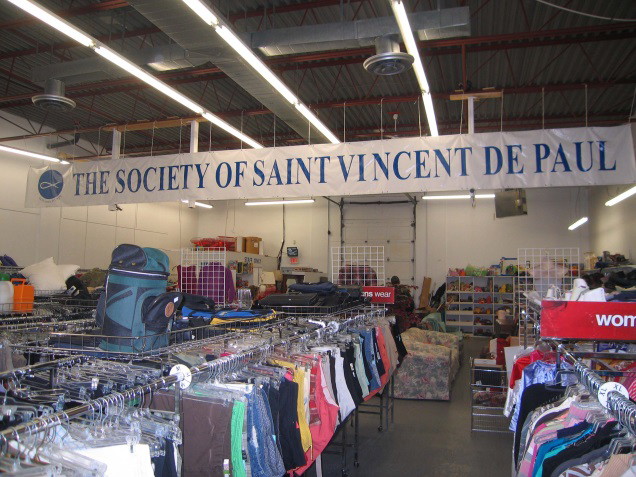
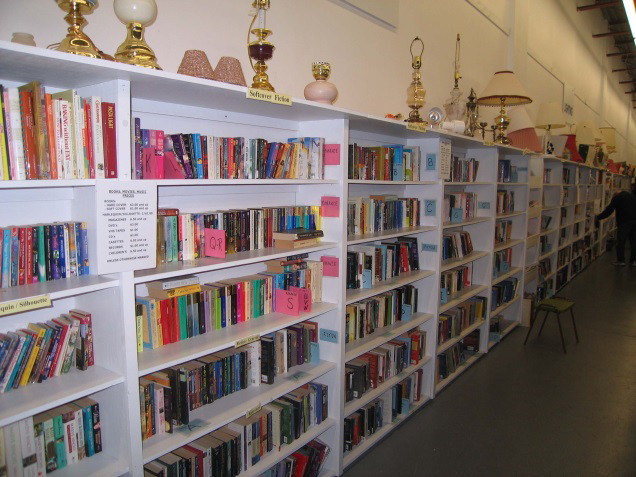
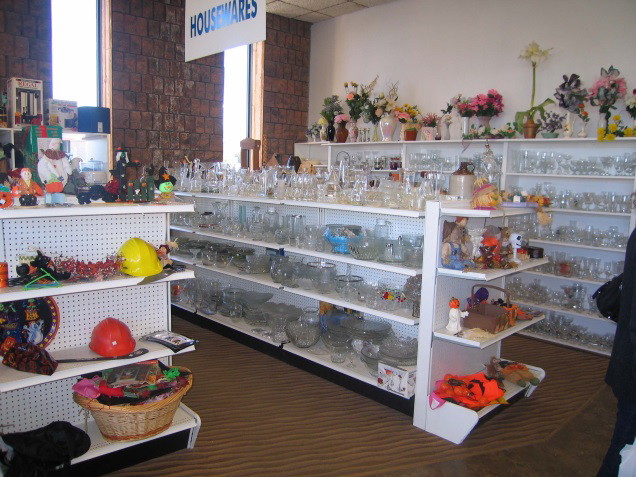
Inside Vinnie's you'll find well organized clothing (top),
tidy book shelves (middle),
and attractively displayed glassware and home décor items (bottom)
The Move
You may think with an approval to relocate complete, that the next stages should be easy. Think again. The first task for Angela was to develop a retail floor plan. With a $30,000 budget, critical operating and infrastructure enhancements commenced. Clothing display rack acquisitions, installation of air conditioning, painting of the entire building, construction of a manager's office, employee lunch room and display/front counter were just some of the hurdles.
Advertising was viewed as a critical component of the relocation. Advertising focused upon several areas:
- Parishioners were provided details of the thrift store relocation and the creation of the food pantry.
- Advertisement was placed in the local paper
- Regular shoppers at the old store location had to be informed of the new location
- Cogeco, the local TV cable company completed two 30 minute shows informing the community about the thrift store and the Society. A retail promotional theme on vintage clothing raised the awareness of the availability of products beyond thrift shoppers.
- Branding - the Vinnies Feel Good Shopping theme was developed, attracting new clientele who would not normally visit a thrift store. Once in the store, the SSVP name and logo's are very evident.
The official Grand Opening was August 2, 2011.
The Results
The short answer...Absolute Success!!! The Success can be measured on many levels:
- Most important, those we serve have benefited in multiple ways, from better food distribution and improved material support.
- Donations are up significantly, as well as the quality of the merchandise.
- The food pantry provided an opportunity to unite all Vincentians to work together as 'one unit', previously they worked independently within their own conferences, with many Vincentians not knowing other Vincentians from other conferences.
- The design of the food pantry gave 'dignity' to clients, providing them a 'choice' on the food products they received.
- Home visits are still conducted on initial contacts.
- The store clothing voucher system was modified
whereby a person-in-need was given a dollar value of merchandise that they can use to select merchandise. This empowered the person-in-need to select merchandise they needed.
- Furniture and household items are provided as deemed necessary by the Store Manager.
- A very effective software program for client tracking and internal merchandise distribution controls was installed. The software was established by a Vincentian from Victoria BC for their conference. It is called the “Good Works” program. There are multiple
uses of the program.
- It records basic client ID information.
- It records pertinent information about the needs of the person to help determine the level and frequency of assistance required.
- The food pantry and store operations are connected to the same system, so they share the same data, enabling them to know how and when service has been provided.
- It provides a tracking system that enables the operation to identify trends in material support.
- The cost of the system is very attractive, $10/conference per month.
- In terms of monetary results, the days of operating with deficits and struggling to cover operating costs are history. Operating surpluses have been very substantial each month. For the first eight months of this year, operating surpluses pay all the wages both at the store and food pantry, almost all of the expenses of the pantry and allows us to better serve our friends in need.
- The store employs 12 paid staff (8 full-time, 4 part-time) and has 15 volunteers.
- The current facility of 8,000 sq/ft is deemed too small and the store is eyeing a nearby property of 20,000 sq/ft for expansion.
- The Vinnies Feel Good theme is a recognized brand within the community. It is a desired place to shop by all economic classes while at the same time promoting the SSVP name, mission and values.
- The new store is bright and fresh compared to the old location.
- Volunteers and staff have embraced the changes, as evidenced by their enthusiasm and commitment to their work.
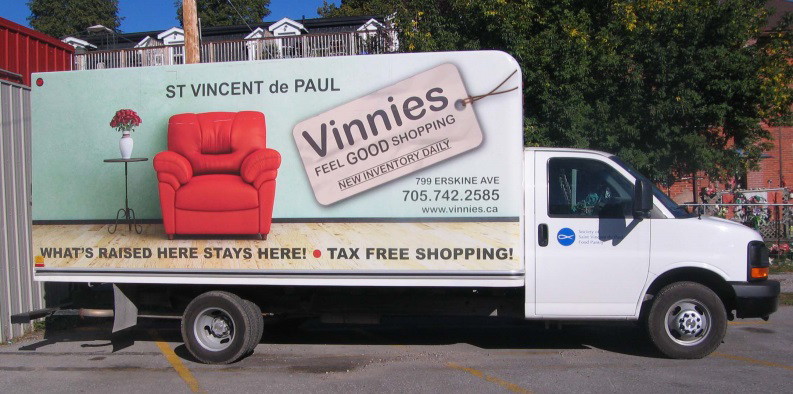
This attractive truck shows the true new appeal of Vinnie's
|
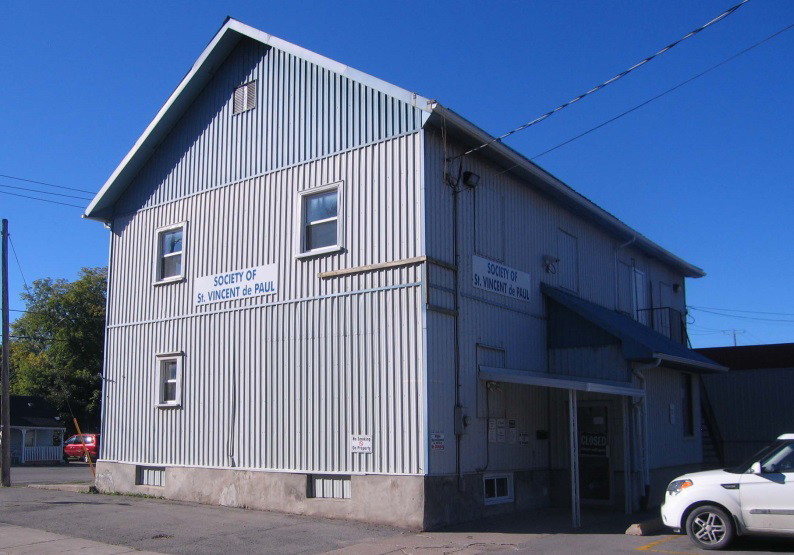
The Food Pantry, where people-in-need are empowered and given choices
The Food Pantry
Previously food distribution was administered thru each conference. Distribution was based upon the conferences individual resources availability. This often created disparity in food distribution across the city. People with the greatest need often received less food support because the sponsoring conferences served many people with fewer resources. The redesigned Central Food Pantry has eliminated the inequities that previously existed. In addition, the quality, quantity and expanded types of food available were dramatically improved. The pantry features an abundance of food items inclusive of milk and dairy products, frozen meat and other frozen food products, fresh fruits and vegetables, breads, personal hygiene products, newborn and infant products and much more.
|
|
|
Above: The Food Pantry shelves are stocked like in a grocery store, complete with “prices”. Our friends-in-need can choose their items with Vinnie Dollars; Below: The Food Pantry even stocks milk and frozen meats and vegetables; Bottom: Persons-in-need are registered in private
|
|
|
Vincentians from five of the six SSVP conferences in the city participate in the staffing of the pantry. When a person-in-need arrives at the Pantry, they are greeted by a Vincentian who will meet with them in private to assess their needs. They will be provided 'food points' that will be used in the selection of food products. A Vincentian will accompany the person-in-need while they select the food of their choice. There is no predetermined food selection made by the pantry.
Over 1800 persons are served each month, with an average of 100 new families being added to the list of families requiring assistance monthly.
Summary
Implementing change is always very difficult. This is apparent at many levels within several SSVP councils/conferences and thrift stores. To initiate change, attributes such as vision, commitment, faith, empowerment, courage, and determination are necessary. Of course, having the right people possessing these skills are equally important. If we are to learn anything about the success of the Peterborough operation, they avoided 'jumping into' impulsive decisions. They established an effective Planning Committee that sought out pertinent information necessary to make sound decisions. They empowered their Store Manager to manage the business while ensuring the mission and values of the SSVP were central to everything they did in their operation.
It may seem easier to maintain the status quo, to let the next person deal with the issues at hand. This only results in further erosion of our ability to help those in need. We can learn much from the success of the Peterborough operation. Their model on how to confront a major challenge is worthy of attention by everyone.






 This attractive truck shows the true new appeal of Vinnie's
This attractive truck shows the true new appeal of Vinnie's
 The Food Pantry,
The Food Pantry,